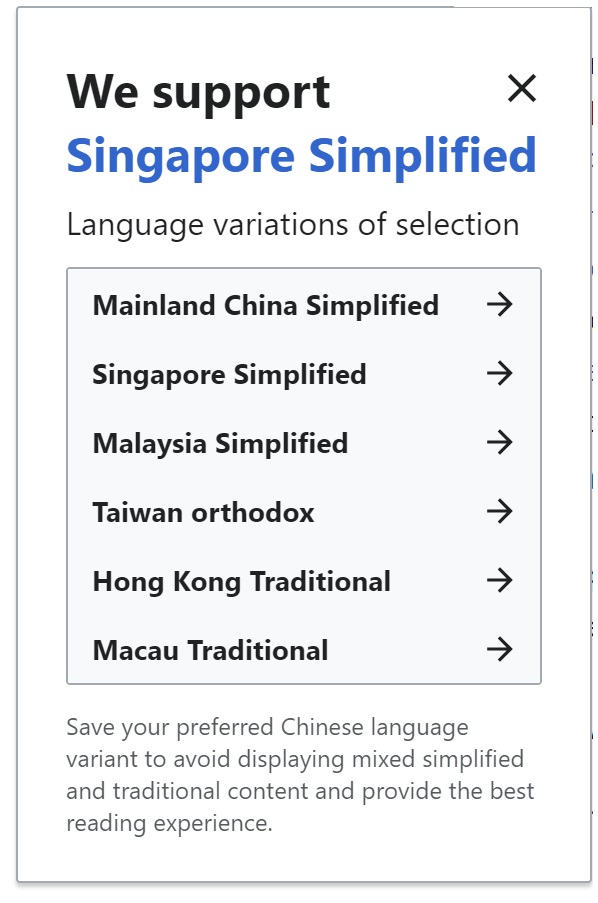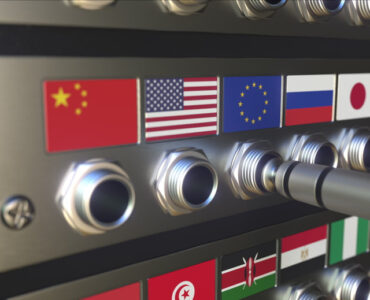Taiwan, an island nation known for its vibrant culture and technological prowess, boasts a fascinating linguistic landscape that mirrors its diverse history and society. As of April 2024, the population of Taiwan is estimated to be over 23 million. The languages of Taiwan are a tapestry of indigenous languages, Chinese dialects, and foreign influences, each telling a unique story of the island’s past and present.
Indigenous Languages
Taiwan is the ancestral home of the Austronesian language family, one of the world’s largest language families. It includes languages spoken as far away as Madagascar, Hawaii, and Easter Island. The indigenous languages of Taiwan are an integral part of this family. These languages, spoken by the various indigenous tribes of Taiwan, such as the Amis, Atayal, Paiwan, and Bunun, are not just dialects but distinct languages with their own rich oral traditions and cultural expressions.
Sadly, many of Taiwan’s indigenous languages are endangered due to historical suppression and modernization. However, recent years have seen a resurgence in interest and efforts to preserve and revitalize these languages. This includes educational initiatives and the incorporation of these languages into media and public life.
Mandarin
Mandarin is the official language of Taiwan and is spoken by the majority of the population. It was introduced and promoted by the Kuomintang government after their retreat to Taiwan in 1949. Mandarin in Taiwan is similar to that spoken in China but has its own characters and characteristics, influenced by the island’s history and other languages spoken there. This is important to note when ordering Mandarin Chinese translation services for use in Taiwan.
Taiwanese Hokkien
Taiwanese Hokkien, commonly referred to as “Taiwanese,” is widely spoken and is the native language of about 70% of the population. It’s a variety of Min Nan Chinese spoken in southern Fujian Province in China. Taiwanese Hokkien has played a significant role in Taiwan’s local culture and identity, especially in literature, music, and cinema.
Hakka and Other Chinese Dialects
Hakka is another significant Chinese dialect in Taiwan, spoken by the Hakka community, which makes up about 15-20% of the population. Other Chinese dialects, such as Teochew and Cantonese, are also spoken by smaller communities.
Foreign Languages
Due to its colonial history and international interactions, foreign languages like Japanese and English have left their mark on Taiwan. Japanese is understood by some of the older generation, a legacy of Japanese rule from 1895 to 1945. English is widely taught in schools and is increasingly important for business and international relations.
Major Industries in Taiwan
Taiwan’s language diversity is paralleled by its dynamic economy, characterized by robust industries and technological innovation.

Technology and Electronics
Taiwan is a global leader in the semiconductor and electronics industries. Companies like Taiwan Semiconductor Manufacturing Company (TSMC) and Foxconn are giants in their fields, with TSMC being the world’s largest contract chipmaker. These industries are crucial to the global supply chain for electronics, from smartphones to computers.
Manufacturing
Beyond electronics, Taiwan has a strong manufacturing sector, including machinery, petrochemicals, and automobiles. The island’s manufacturing capabilities are renowned for their high quality and efficiency.
Agriculture
While less dominant than technology, agriculture remains a vital part of Taiwan’s economy. The island is known for its tea, fruits (especially pineapples and mangos), and vegetables. The agricultural sector has also seen a shift towards high-value, sustainable, and organic farming practices.
Services
The service sector, including finance, healthcare, and tourism, plays an essential role in Taiwan’s economy. The island’s financial services are well-developed, and its healthcare system is one of the most efficient and affordable in the world. Tourism in Taiwan is a growing industry, drawing visitors to its natural landscapes, rich culture, and culinary delights.
Green Energy
Taiwan is increasingly investing in renewable energy, particularly wind power. The government has ambitious plans to expand offshore wind farms, aiming to reduce dependence on fossil fuels and position Taiwan as a leader in green energy.
In conclusion, Taiwan’s linguistic and industrial landscapes are a testament to its rich history, cultural diversity, and economic resilience. From the preservation of indigenous languages to its cutting-edge technological developments, Taiwan stands as a unique and influential player on the world stage.
What are the differences between the Mandarin spoken in Taiwan to that spoken in China?
The differences between Mandarin spoken in Taiwan and that spoken in China are fascinating and can be seen in various aspects such as pronunciation, vocabulary, and even writing system. Here’s an overview:
Pronunciation
Tones: While both varieties of Mandarin use four tones, there are subtle differences in how these tones are articulated. Taiwanese Mandarin generally has a slightly different tonal quality compared to Chinese Mandarin.
Phonetic Differences: Certain phonemes are pronounced differently. For example, the “sh”, “ch”, “zh”, and “r” sounds in Taiwan tend to be softer or less retroflex compared to the more pronounced retroflex sounds in Chinese Mandarin.
Vocabulary and Terms
Unique Words and Phrases: Taiwanese Mandarin has incorporated many words from other local languages, such as Taiwanese Hokkien and Japanese, as well as unique creations. This results in vocabulary that might be unfamiliar to Chinese Mandarin speakers.
Differences in Common Words: Some everyday words have different preferred terms Taiwanese Mandarin and Chinese Mandarin. For example, “pineapple” is 菠萝 (bōluó) in China but 鳳梨 (fèng lí) in Taiwan.
Influence of Japanese and Local Languages: Due to historical reasons, Taiwanese Mandarin has adopted some words from Japanese and local Taiwanese languages, which aren’t found in Chinese Mandarin.
Writing System
Traditional vs. Simplified Characters: The most noticeable difference is in the writing system. Taiwan uses Traditional Chinese characters, while China uses Simplified Chinese characters. This difference is a result of script reform in China in the mid-20th century.
Orthographic Differences: Even within the Traditional script, there are some orthographic differences between Taiwan and Hong Kong, another region that uses Traditional Chinese characters.
Formality and Style
Formality in Language: Taiwanese Mandarin is often perceived as being more formal or polite, partly due to the influence of Japanese and traditional Chinese culture.
Style and Idiomatic Expressions: The style of speech and use of idiomatic expressions can differ, reflecting local cultural and historical influences.
Education and Official Use
Educational Materials: Taiwan and China each have autonomous education systems with distinctive educational materials, leading to variations in language education.
Official Language Policies: Language policies in Taiwan and China have influenced how Mandarin is used in media, education, and government.
Accents and Regional Variations
Regional Accents: Just as in any language, regional accents can vary significantly. In both China and Taiwan, Mandarin is spoken with various accents influenced by local dialects or languages.
In summary, while Taiwanese Mandarin and Chinese Mandarin are mutually intelligible, they exhibit differences in pronunciation, vocabulary, writing, and cultural nuances. These differences are a reflection of the unique historical, cultural, and political developments in each region.

Will individuals in Taiwan be able to read Simplified Chinese texts from China?
Yes, Taiwanese individuals would generally be able to read texts written in Simplified Chinese from China, though there are some nuances to consider.
- Education in Traditional Characters: People in Taiwan are educated in Traditional Chinese characters. However, due to the prevalence of Simplified Chinese in international media, technology, and business, many Taiwanese people have some familiarity with Simplified characters.
- Mutual Intelligibility of Characters: While Simplified and Traditional Chinese characters differ in appearance, many characters are either the same or have similar counterparts. This similarity allows for a degree of mutual intelligibility.
- Contextual Understanding: Even if a Taiwanese reader is not fully proficient in recognizing all Simplified characters, context often aids in understanding the overall meaning of a text.
- Digital Tools and Learning Resources: Digital tools like online dictionaries, translation apps, and language learning resources are widely available and can help bridge the gap between Traditional and Simplified characters.
- Exposure to Simplified Chinese: In the modern globalized world, people in Taiwan may encounter Simplified Chinese through various channels like the internet, media, and international travel. This exposure can increase their ability to read Simplified Chinese.
- Interest in Learning: Additionally, there’s a growing interest among people in Taiwan, especially among the younger generation and professionals, to learn Simplified Chinese due to economic and cultural ties with China.
In summary, while Traditional and Simplified Chinese characters are different, a Taiwanese person would generally be able to read Simplified Chinese texts with varying degrees of ease, depending on their exposure and experience with the script.
What are the differences between Traditional Chinese in Hong Kong as opposed to Taiwan?
The differences between Traditional Chinese as used in Hong Kong and Taiwan are subtle yet notable, reflecting the unique linguistic and cultural histories of these two regions. Here are some of the key differences:
Orthographic Differences
Character Variants: While both regions use Traditional Chinese characters, there are some variations in character forms. Certain characters are written differently in Hong Kong compared to Taiwan. These differences are similar to the differences between British and American English spelling (e.g., “colour” vs. “color”).
Standardization: Taiwan has its own standard for writing Traditional Chinese characters, established by the Ministry of Education, Taiwan. Hong Kong, while also using Traditional characters, does not adhere to the same standard and has its own variations.
Vocabulary and Terminology
Influence of Cantonese: In Hong Kong, the vocabulary and phrases used in written Traditional Chinese are heavily influenced by Cantonese, the predominant spoken language in the region. This influence is less pronounced in Taiwan, where the spoken language is predominantly Mandarin or Taiwanese Hokkien.
Colloquial Expressions: The colloquial expressions found in written Chinese in Hong Kong often reflect Cantonese idioms and structure, which can be quite different from the expressions used in Taiwan.
Grammar and Usage
Sentence Structure: The sentence structure in written Chinese can vary between Hong Kong and Taiwan, again largely due to the influence of the local spoken languages.
Formal vs. Informal Styles: The style of writing in Hong Kong, influenced by Cantonese, can sometimes be more informal or conversational compared to the style used in Taiwan, especially in media and advertising.
Use in Official and Legal Documents
Legal Terminology: Legal and official documents in Hong Kong often use specific terminologies and phrases that are distinct from those used in Taiwan, influenced by the region’s legal system and history as a British colony.
Government and Educational Standards: The education systems in Hong Kong and Taiwan have different curricula and standards for teaching Chinese, which influences how Traditional Chinese is used in academic and official contexts.
Digital and Print Media
Publishing Standards: The publishing industries in Hong Kong and Taiwan have different standards and practices for using Traditional Chinese, reflecting the distinct preferences and practices in each region.
Media Language: The language used in newspapers, books, and online media can vary, with Hong Kong media often reflecting a more Cantonese-centric use of Chinese, while Taiwanese media reflect a Mandarin or Taiwanese Hokkien influence.
In summary, while both Hong Kong and Taiwan use Traditional Chinese characters, there are differences in character variants, vocabulary, grammar, and usage influenced by the local spoken languages, cultural practices, and historical developments of each region. These differences are comparable to the variations in English used in different English-speaking countries.
Is Taiwanese a language?
Yes, Taiwanese is considered a language. More formally, it is known as Taiwanese Hokkien or simply Hokkien. Here are some key aspects of this language:
- Linguistic Classification: Taiwanese Hokkien is a variety of Southern Min (Min Nan) Chinese, originating from the southern part of Fujian province in China. It is part of the Chinese language family, which includes various mutually unintelligible languages or dialects.
- Distinct from Mandarin: Taiwanese Hokkien is significantly different from Mandarin, the official language of Taiwan. The differences are in terms of pronunciation, vocabulary, and grammar, making it generally mutually unintelligible with Mandarin.
- Local and Cultural Importance: Taiwanese Hokkien plays a crucial role in Taiwan’s local culture and identity. It is widely used in daily communication, media, literature, and music, and it holds a special place in the hearts of the local population, particularly as a marker of Taiwanese identity.
- Historical and Cultural Roots: The language reflects the history and culture of Taiwan, incorporating elements from various influences over the centuries, including the indigenous languages of Taiwan, Dutch, Spanish, Japanese, and, of course, Chinese.
- Dialectal Variations: Within Taiwanese Hokkien, there are variations and dialects that reflect the diverse regions of Taiwan. These variations can be noticed in accent, vocabulary, and some aspects of grammar.
- Writing System: Taiwanese Hokkien does not have a standardized writing system. It is often written using Chinese characters, though not all spoken words have corresponding characters. Latin script and Taiwanese Romanization System (Tâi-lô) are also used, especially in academic and some cultural settings.
- Preservation and Revival Efforts: In recent years, there has been a growing movement in Taiwan to preserve and promote Taiwanese Hokkien, as part of a broader effort to celebrate and maintain the island’s diverse linguistic and cultural heritage.
In summary, Taiwanese, or Taiwanese Hokkien, is indeed a distinct language, rich in history and cultural significance, and it plays a pivotal role in the social and cultural fabric of Taiwan.





